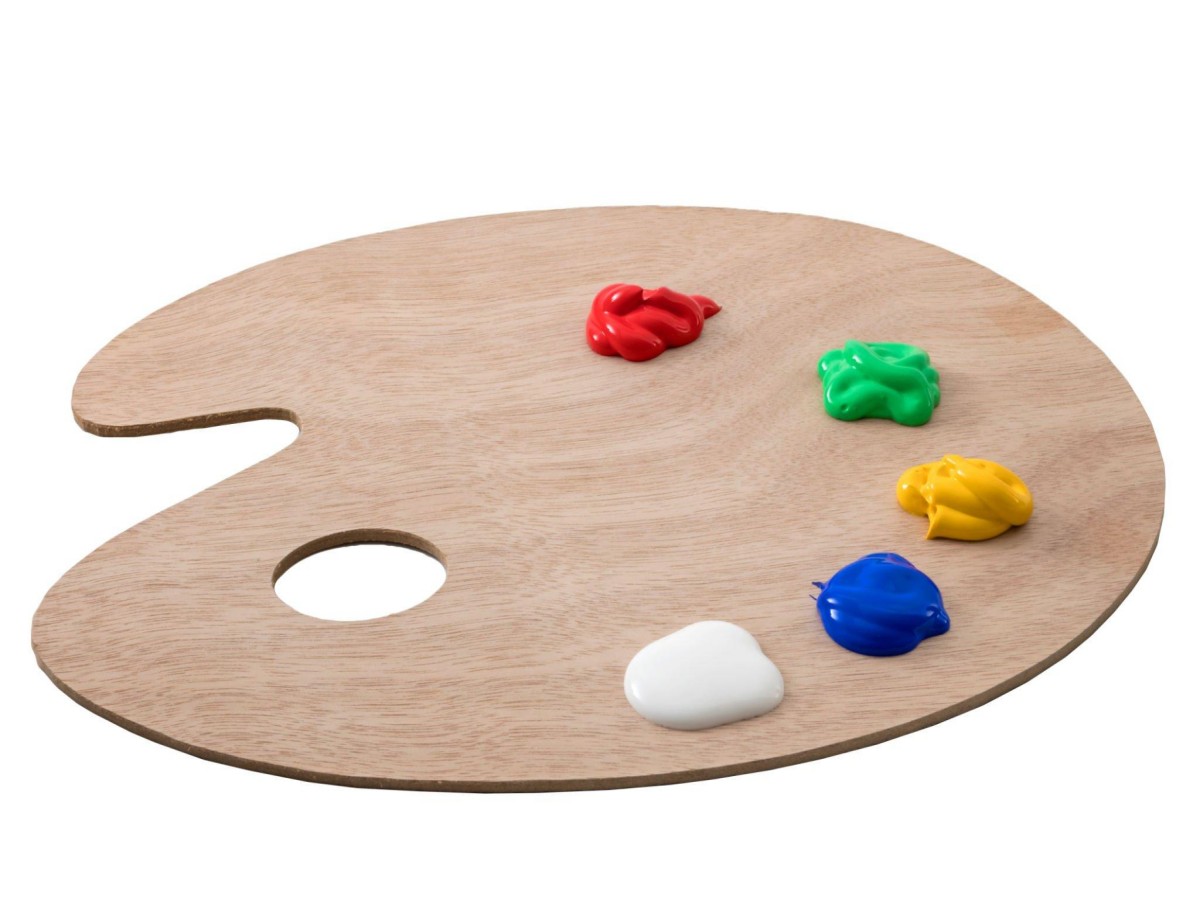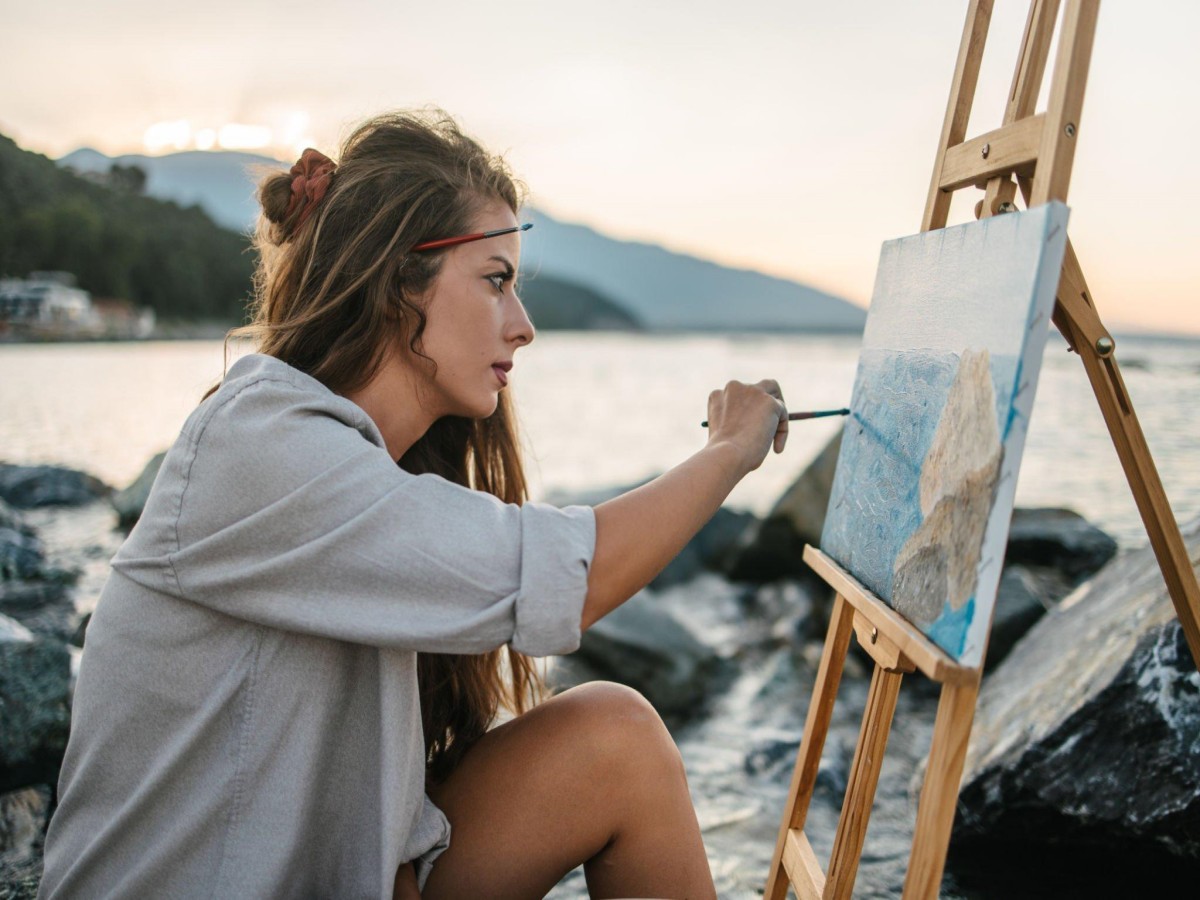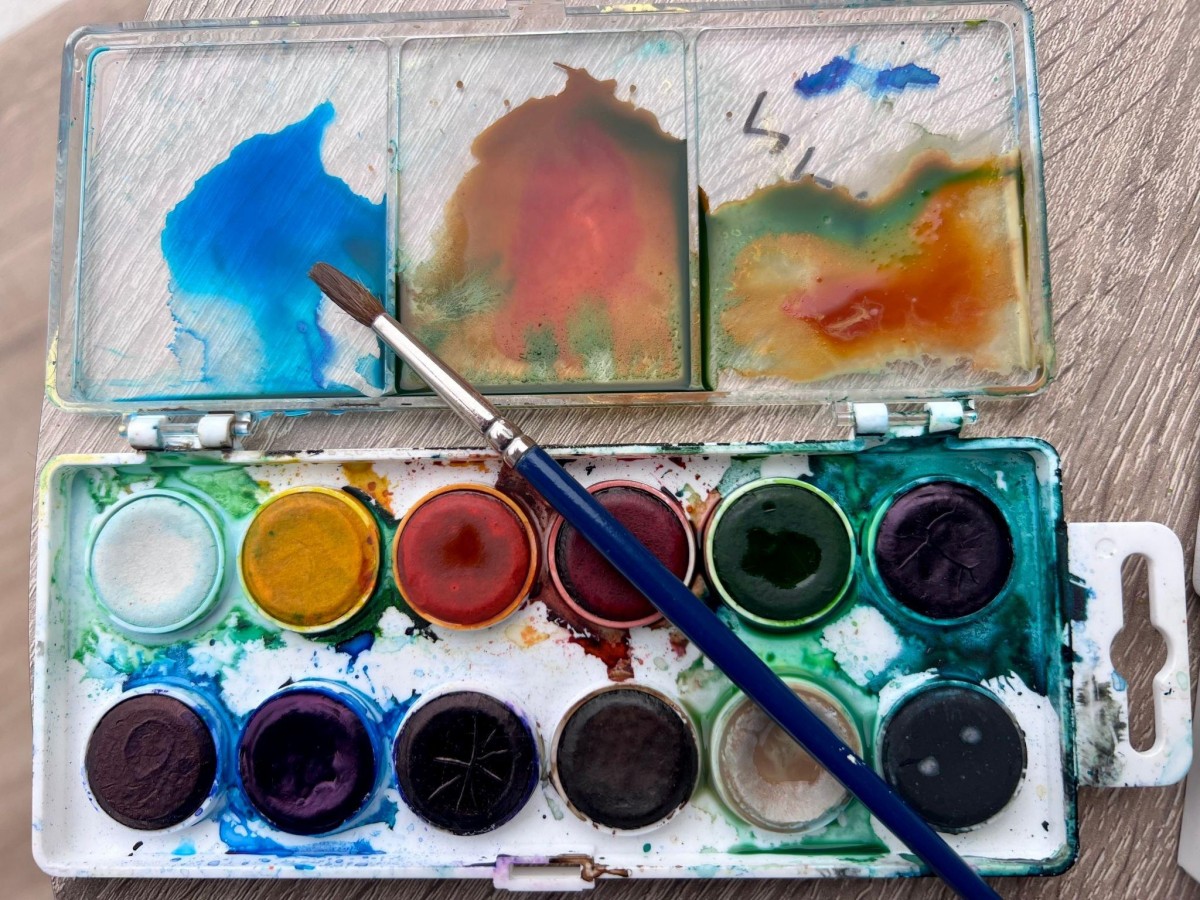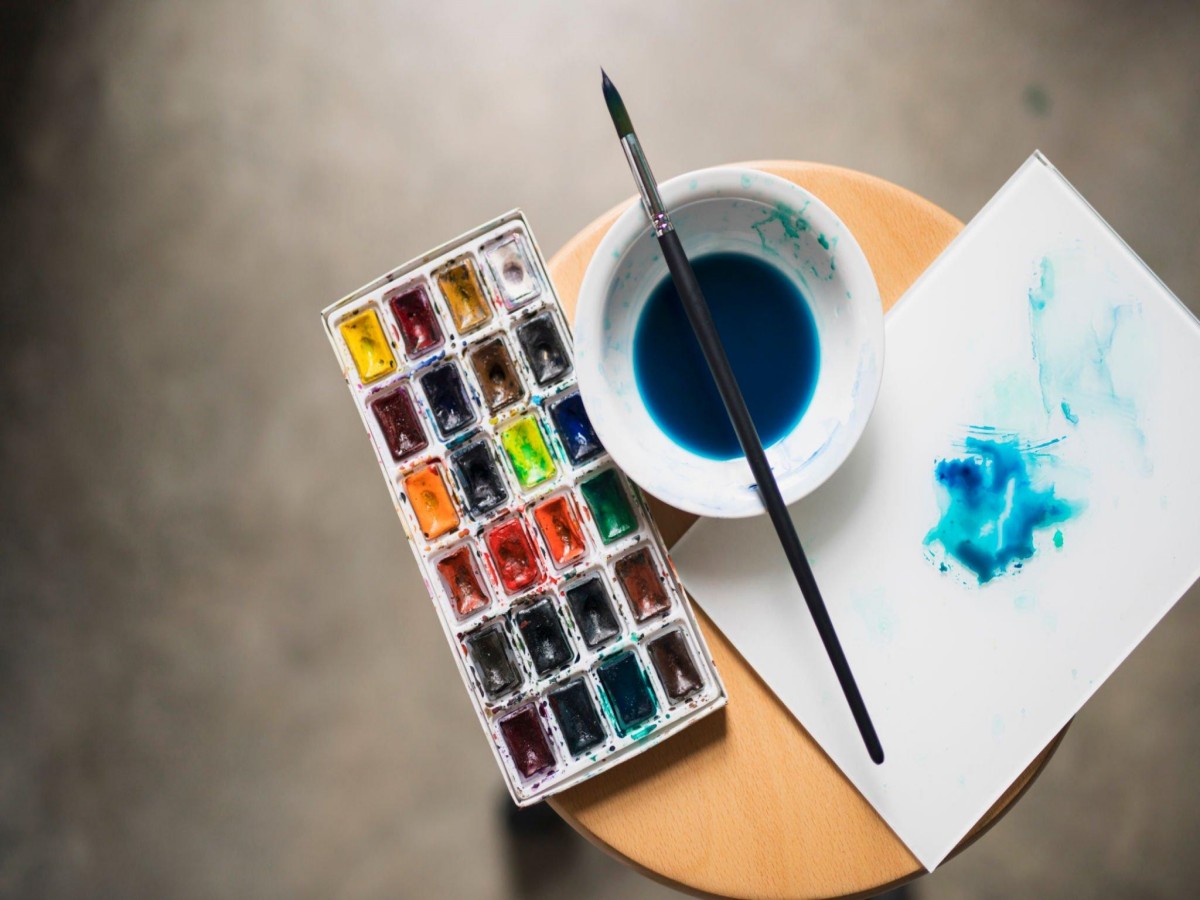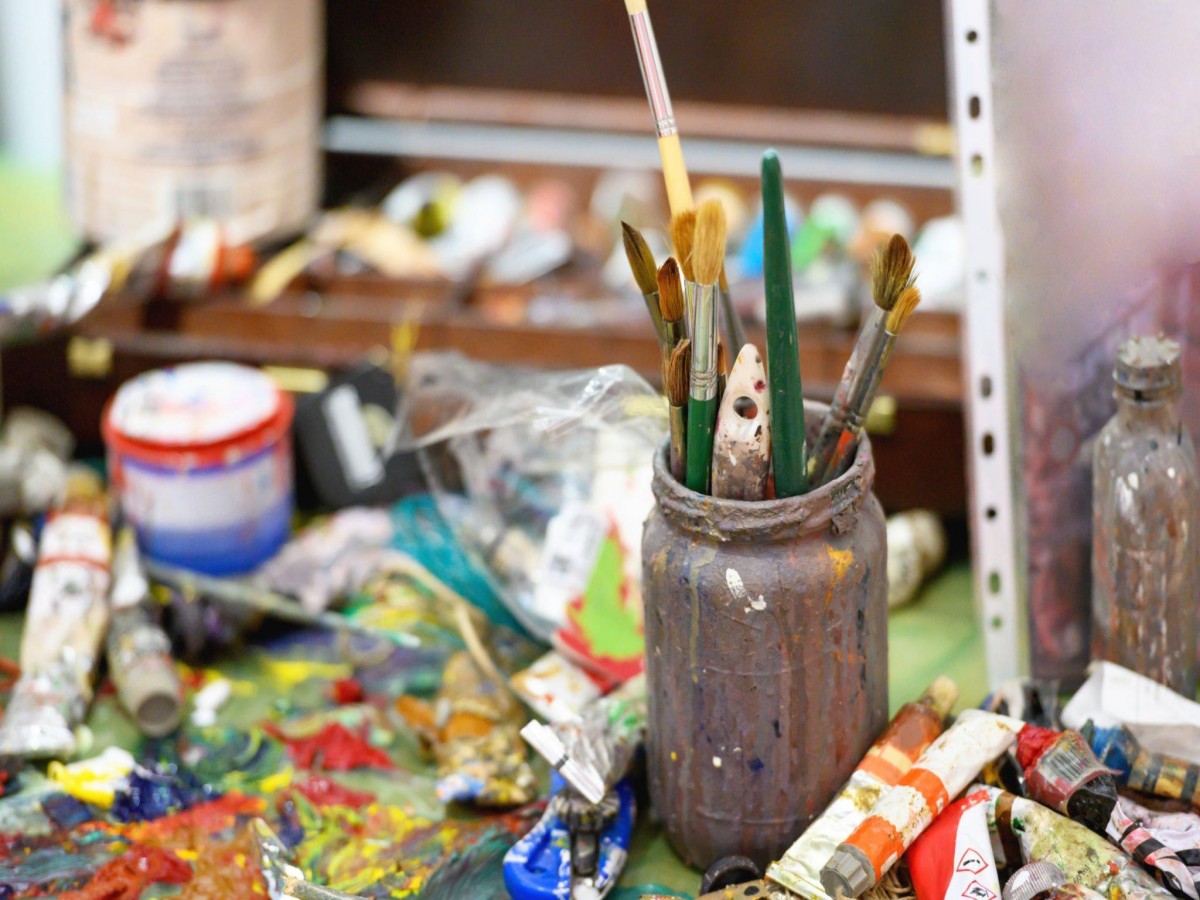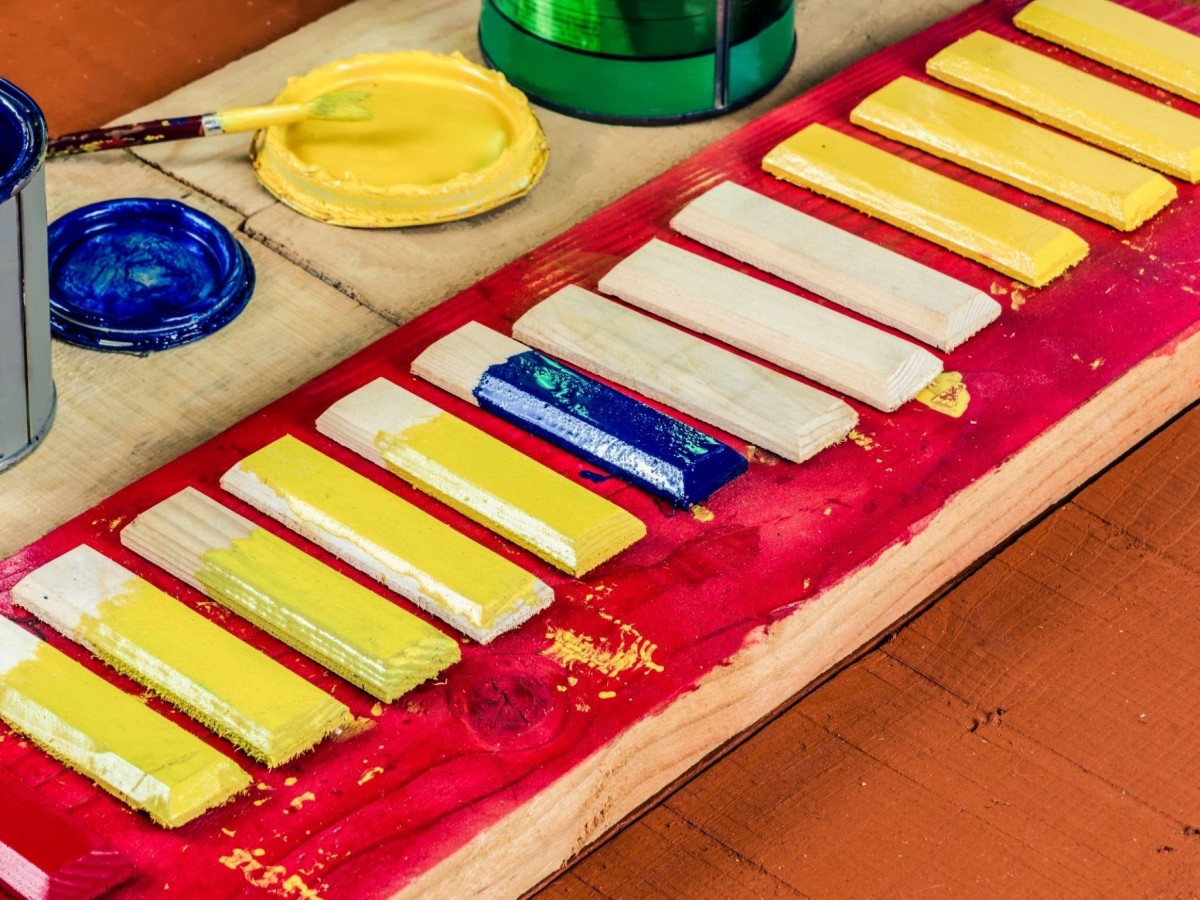Art Centres
How to Choose the Perfect Wooden Watercolor Palette
Are you an artist who loves working with watercolors? If so, you know how important it is to have the right tools to create beautiful works of art. One essential tool for any watercolor artist is a wooden watercolor palette. In this article, we will discuss everything you need to know about choosing the perfect wooden watercolor palette for your artistic needs.
Why Choose a Wooden Watercolor Palette?
Wooden watercolor palettes are highly regarded by artists for several reasons. First and foremost, wood is a natural material that provides a stable and sturdy surface for mixing and storing your watercolors. The texture of the wood also enhances the overall painting experience, giving you a tactile connection to your artwork.
Considerations When Choosing a Wooden Watercolor Palette
When selecting a wooden watercolor palette, there are a few key factors to keep in mind:
Size: Consider the size of the palette based on your personal preferences and the size of your artworks. A larger palette allows for more color mixing and storage space, while a smaller one is more portable.
Number of Wells: Wells are the small depressions on the palette where you can place your watercolors. Think about how many colors you typically use and choose a palette with enough wells to accommodate your needs.
Layout: The layout of the palette refers to the arrangement of the wells. Some palettes have a traditional layout with wells around the edges and a larger mixing area in the center, while others have a more unconventional design. Consider which layout works best for your painting style.
Material: While we are focusing on wooden palettes in this article, it's essential to consider the type of wood used. Different types of wood have different properties, such as absorbency and durability. Popular choices include birch, beech, and bamboo.
Benefits of Using a Wooden Watercolor Palette
There are numerous benefits to using a wooden watercolor palette:
Natural Beauty: Wooden palettes exude a sense of natural beauty and craftsmanship. They add a touch of elegance to your art studio.
Durability: High-quality wooden palettes are incredibly durable and can withstand the rigors of daily use. With proper care, they can last for many years.
Color Mixing: The texture of the wood allows for effortless color mixing. The natural oils in the wood can also enhance the flow of your watercolors.
Portability: While wooden palettes are generally bulkier than their plastic counterparts, they are still portable enough to take with you on plein air painting adventures.
Customization: Some wooden palettes come with removable mixing trays or additional compartments for brushes and other art supplies. This customization feature allows you to personalize your palette according to your preferences.
Caring for Your Wooden Watercolor Palette
To ensure the longevity of your wooden watercolor palette, follow these care instructions:
Clean After Each Use: After painting, clean your palette with a damp cloth or sponge. This prevents the buildup of dried paint and makes it easier to mix colors during your next painting session.
Avoid Direct Sunlight: Exposure to direct sunlight can cause the wood to warp or crack. Store your wooden palette in a cool, dry place away from direct sunlight.
Apply Protective Finish: Applying a protective finish, such as varnish or oil, can help protect the wood from moisture and extend its lifespan.
Store Properly: When not in use, store your palette in a clean and dry environment. Consider using a protective case or cover to prevent dust accumulation.
Conclusion
A wooden watercolor palette is a must-have tool for any watercolor artist. Its natural beauty, durability, and color mixing capabilities make it an excellent choice for both beginners and professionals. By considering factors like size, number of wells, layout, and material, you can find the perfect wooden palette that suits your artistic needs. Remember to care for your palette properly to ensure its longevity and continue creating stunning watercolor artworks for years to come.
Choosing the Right Painting Easels for Your Artistic Needs
When it comes to creating art, having the right tools is essential. Whether you are a professional artist or an amateur enthusiast, a good quality painting easel is a must-have. The right easel not only provides stability and support for your artwork but also offers convenience and flexibility during the creative process. In this article, we will explore the different types of painting easels available in the market and guide you in choosing the perfect one for your artistic needs.
The Importance of a Painting Easel
A painting easel is a structure designed to hold your canvas or paper while you work on your artwork. It provides a stable and adjustable platform, allowing you to position your canvas at the desired height and angle. This is crucial as it helps you maintain proper posture while painting, reducing strain on your neck, back, and shoulders. Additionally, a painting easel keeps your artwork steady and prevents it from getting smudged or damaged during the creative process.
Types of Painting Easels
There are several types of painting easels available, each with its own unique features and benefits. The most common types include:
H-frame Easel: This type of easel is named after its shape, which resembles the letter 'H'. It offers excellent stability and can hold large canvases securely. The adjustable height and angle make it suitable for artists who prefer to work standing up.
A-frame Easel: As the name suggests, this easel has an 'A' shape. It is lightweight and portable, making it ideal for artists who work both indoors and outdoors. A-frame easels are versatile and can accommodate different canvas sizes.
Studio Easel: Studio easels are larger and more robust, designed for artists who work on big projects or in a studio setting. They offer maximum stability and can hold heavy canvases. Studio easels often come with additional features such as storage compartments and wheels for easy maneuverability.
Tabletop Easel: If you have limited space or prefer to work while sitting, a tabletop easel is a perfect choice. These small and compact easels can be placed on a table or desk, providing a comfortable working surface for smaller artworks.
Travel Easel: Artists who frequently travel or paint outdoors will benefit from a travel easel. These lightweight and portable easels are designed for easy transportation and setup. They often come with a carrying case or backpack for added convenience.
Factors to Consider
When selecting a painting easel, there are several factors to consider:
Size and Weight: Determine the size and weight of the easel based on your workspace and mobility requirements.
Stability: Look for an easel that provides stability and does not wobble while you work.
Adjustability: Ensure the easel offers adjustable height and angle options to suit your painting style.
Material: Consider the material of the easel, such as wood or metal, based on durability and aesthetic preferences.
Storage: If you need additional storage for art supplies or want a portable easel, consider models with storage compartments or travel-friendly designs.
Conclusion
Investing in a high-quality painting easel is essential for any artist. It not only provides the necessary support and stability for your artwork but also enhances your overall painting experience. By understanding the different types of painting easels and considering the important factors, you can make an informed decision and choose the perfect easel for your artistic needs.
Synthetic Watercolor Brushes: A Guide to Choosing the Best Brushes for Your Artwork
Watercolor painting is a beautiful and versatile art form that allows artists to create stunning works of art with just a brush and some watercolor pigments. To achieve the best results, it is important to have the right tools, and one of the most crucial tools for any watercolor artist is a good set of brushes. In this article, we will explore the world of synthetic watercolor brushes and provide you with a comprehensive guide to choosing the best brushes for your artwork.
What are Synthetic Watercolor Brushes
Synthetic watercolor brushes are made from man-made materials such as nylon or polyester. These brushes are designed to mimic the characteristics of natural hair brushes, such as the ability to hold and distribute watercolor pigment effectively. Synthetic brushes are a popular choice among artists for several reasons:
They are more affordable than natural hair brushes
They are cruelty-free, making them a great option for animal lovers
They are versatile and can be used with a variety of watercolor techniques
They are durable and tend to last longer than natural hair brushes
Choosing the Right Synthetic Watercolor Brushes
When it comes to choosing the right synthetic watercolor brushes for your artwork, there are a few factors to consider:
Brush Shape
There are several different brush shapes to choose from, including round, flat, mop, and filbert. Each shape has its own unique properties and is suited for different watercolor techniques. For example, round brushes are great for creating fine details and intricate lines, while flat brushes are ideal for covering large areas and creating bold strokes.
Brush Size
Brush sizes are determined by a numbering system, with smaller numbers indicating smaller brushes. The size of the brush you choose will depend on the size of your artwork and the level of detail you want to achieve. It is a good idea to have a variety of brush sizes in your collection to accommodate different painting needs.
Brush Material
Synthetic watercolor brushes are available in a range of materials, including nylon, polyester, and taklon. Each material has its own unique characteristics, so it is worth experimenting with different materials to find the one that suits your painting style.
Price
Price is always a consideration when purchasing art supplies, and synthetic watercolor brushes are generally more affordable than natural hair brushes. However, it is important to remember that quality is also important. Cheap brushes may not hold water or pigment as well, resulting in poor results. It is worth investing in a set of high-quality synthetic brushes that will last you a long time.
Conclusion
Synthetic watercolor brushes are a fantastic option for any watercolor artist. They are affordable, versatile, and cruelty-free, making them a popular choice among artists of all levels. By considering factors such as brush shape, size, material, and price, you can find the perfect set of synthetic watercolor brushes to enhance your artwork and take your watercolor painting to the next level.
Drawing Easels: An Essential Tool for Artists
Whether you are a professional artist or just a hobbyist, a drawing easel is an essential tool that can greatly enhance your artistic experience. Drawing easels provide a stable and adjustable platform for your artwork, allowing you to work comfortably and efficiently. In this article, we will explore the different types of drawing easels available in the market and their benefits.
Types of Drawing Easels
There are several types of drawing easels to choose from, each with its own unique features and advantages. The most common types include:
Studio Easels: These are sturdy and robust easels designed for use in a studio or dedicated workspace. They often have large, adjustable frames that can accommodate a variety of canvas sizes.
Portable Easels: As the name suggests, portable easels are lightweight and easy to transport. They are perfect for artists who like to work outdoors or need to move their easel frequently.
Tabletop Easels: These compact easels are designed to sit on a table or desk. They are ideal for smaller artworks or for artists with limited space.
Benefits of Using a Drawing Easel
Using a drawing easel offers numerous benefits for artists:
Ergonomics: Drawing easels can be adjusted to your desired height and angle, promoting better posture and reducing strain on your neck, back, and shoulders.
Stability: Easels provide a stable platform for your artwork, allowing you to work with precision and accuracy.
Hands-Free: With an easel, you can work hands-free, freeing up your hands to hold brushes, pencils, or other tools.
Better Perspective: By placing your artwork on an easel, you can step back and view it from a distance, gaining a better perspective and making it easier to identify any errors or areas that need improvement.
Increased Productivity: Working on an easel allows you to focus solely on your artwork, eliminating the distractions of holding your canvas or worrying about its stability.
Tips for Choosing the Right Drawing Easel
When selecting a drawing easel, consider the following factors:
Size: Choose an easel that can accommodate the size of your artworks. Consider both the height and width limitations.
Material: Easels are commonly made from wood, metal, or a combination of both. Consider the durability, weight, and aesthetic appeal of the materials.
Adjustability: Look for an easel that offers a wide range of adjustments for height, angle, and canvas positioning.
Stability: Ensure that the easel is stable and won't wobble or topple while you work.
Portability: If you need to transport your easel frequently, opt for a lightweight and foldable design.
Conclusion
A drawing easel is an invaluable tool for artists of all skill levels. It provides stability, adjustability, and hands-free convenience, allowing you to focus on your artwork and unleash your creativity. Consider your artistic needs and preferences when choosing the right drawing easel for your studio or workspace.
Choosing the Perfect Oil Painting Brushes Set
Introduction: Oil painting is a beautiful and captivating art form that allows artists to express their creativity and imagination. To create stunning oil paintings, it is essential to have the right tools, including a high-quality oil painting brushes set. In this article, we will discuss the importance of choosing the perfect oil painting brushes set and provide valuable insights to help you make an informed decision.
1. Understanding Different Brush Types
When selecting an oil painting brushes set, it is crucial to understand the different brush types available. Some common brush types include flat brushes, round brushes, filbert brushes, and fan brushes. Each brush type serves a specific purpose and creates unique effects. For example, flat brushes are excellent for creating broad strokes and covering large areas, while round brushes are ideal for adding intricate details.
2. Consider the Brush Material
The brush material plays a significant role in determining the quality and performance of the oil painting brushes set. Natural bristle brushes, such as those made from hog hair, are known for their stiffness and durability. These brushes are suitable for thick and heavy oil paints. On the other hand, synthetic brushes are softer and more flexible, making them ideal for smooth blending and delicate brushwork.
3. Evaluate the Brush Sizes
Brush sizes vary from small to large, and each size serves a different purpose. Small brushes are excellent for adding fine details, while larger brushes are suitable for covering larger areas with broad strokes. When choosing an oil painting brushes set, it is recommended to opt for a variety of sizes to accommodate different painting techniques and preferences.
4. Assess the Brush Handle
The brush handle is often overlooked, but it plays a crucial role in providing comfort and control while painting. Look for brushes with long, balanced handles that fit comfortably in your hand. A comfortable handle ensures a steady grip, allowing you to have better control over your brushstrokes.
5. Quality and Price
Lastly, consider the quality and price of the oil painting brushes set. High-quality brushes may be more expensive initially but can last longer and provide better results in the long run. It is worth investing in a reputable brand that offers durable and reliable brushes. However, keep in mind that the most expensive brushes may not always be the best choice for your specific needs and preferences.
Conclusion
Choosing the perfect oil painting brushes set is essential for any artist looking to create stunning oil paintings. By understanding the different brush types, considering the brush material, evaluating the brush sizes, assessing the brush handle, and considering the quality and price, you can make an informed decision and find the ideal set of brushes that suits your artistic style and preferences. Invest in high-quality brushes, and watch your oil paintings come to life with every stroke!
Choosing the Best Professional Watercolor Brushes for Your Artwork
When it comes to creating stunning watercolor paintings, having the right tools is essential. One of the most important tools for any watercolor artist is a set of professional watercolor brushes. These brushes are specifically designed to hold and distribute watercolor paint in a way that allows artists to achieve the desired effects and textures.
Understanding the Different Types of Watercolor Brushes
Before you can choose the best professional watercolor brushes for your artwork, it's important to understand the different types of brushes available. There are several factors to consider when selecting brushes, including the type of bristles, the shape of the brush head, and the size of the brush.
Types of Bristles
Watercolor brushes can have either natural or synthetic bristles. Natural bristles, such as those made from sable or squirrel hair, are known for their ability to hold a large amount of water and paint. They are ideal for creating smooth washes and blending colors. Synthetic bristles, on the other hand, are more affordable and durable. They work well for detailed work and can mimic the qualities of natural bristles.
Shapes of Brush Heads
Watercolor brushes come in a variety of shapes, each with its own unique purpose. Some common brush head shapes include round, flat, filbert, and fan. Round brushes are versatile and can be used for both broad strokes and fine details. Flat brushes are ideal for covering large areas with washes of color. Filbert brushes have a rounded, flat shape that is perfect for blending and creating soft edges. Fan brushes have bristles that are spread out in the shape of a fan and are great for creating texture and special effects.
Choosing the Right Size
The size of the brush refers to the width of the brush head. Watercolor brushes are typically labeled with a number, ranging from 0000 (the smallest) to 24 (the largest). The size you choose will depend on the scale of your artwork and the level of detail you want to achieve. Larger brushes are better suited for covering larger areas, while smaller brushes are perfect for adding fine details.
Tips for Selecting Professional Watercolor Brushes
Now that you have a better understanding of the different types of watercolor brushes, here are some tips to help you select the best professional brushes for your artwork:
Consider the type of bristles that best suit your painting style and budget.
Experiment with different brush head shapes to find the ones that work best for your desired effects.
Invest in a variety of brush sizes to accommodate different areas of your artwork.
Read reviews and recommendations from other artists to find high-quality brushes.
Take care of your brushes by cleaning them properly after each use and storing them in a safe place.
Conclusion
Choosing the best professional watercolor brushes for your artwork can make a significant difference in the quality and outcome of your paintings. By understanding the different types of brushes available and considering factors such as bristle type, brush head shape, and size, you can select the brushes that best suit your artistic needs. Remember to experiment, take care of your brushes, and enjoy the process of creating beautiful watercolor paintings.
Watercolor Brushes for Beginners: A Guide to Choosing the Right Tools
Introduction
Making the right choice when it comes to watercolor brushes is crucial for beginners who are just starting their artistic journey. The right tools can make a significant difference in the outcome of your artwork, allowing you to create beautiful and vibrant watercolor paintings. In this guide, we will explore the different types of watercolor brushes available and provide tips on how to choose the perfect brushes for your needs.
Types of Watercolor Brushes
1. Round Brushes: Round brushes are the most versatile type of watercolor brushes. They have a pointed tip, which makes them ideal for creating fine lines, intricate details, and precise strokes. Round brushes come in various sizes, ranging from 000 to 20, with smaller sizes being suitable for delicate work, and larger sizes for covering larger areas.
2. Flat Brushes: Flat brushes have a square-shaped tip with straight edges. They are excellent for covering larger areas, creating broad strokes, and laying down washes of color. Flat brushes are available in different sizes and widths, allowing you to choose the one that suits your painting style.
3. Filbert Brushes: Filbert brushes have a rounded and flat tip, resembling an oval shape. They offer the benefits of both round and flat brushes, making them versatile for a variety of painting techniques. Filbert brushes are great for blending, creating soft edges, and adding texture to your watercolor paintings.
Tips for Choosing Watercolor Brushes
1. Consider the Bristle Material: Watercolor brushes are typically made from natural or synthetic bristles. Natural bristles, such as sable or squirrel hair, are known for their ability to hold and release water effectively, allowing for smooth and controlled brushstrokes. Synthetic bristles, on the other hand, are more affordable and suitable for beginners.
2. Determine the Brush Size: The size of the brush refers to the width of the bristles at the ferrule. Smaller brushes are perfect for intricate details, while larger brushes are ideal for covering larger areas. It is recommended to have a variety of brush sizes in your collection to achieve different effects in your artwork.
3. Test the Brush Quality: Before purchasing watercolor brushes, it is essential to test their quality. Check if the bristles are evenly distributed, secure in the ferrule, and spring back to their original shape after being bent. High-quality brushes will provide better control and durability, ensuring a pleasant painting experience.
Conclusion
Choosing the right watercolor brushes for beginners is crucial for achieving desired results in your artwork. By understanding the different types of brushes and considering factors such as bristle material, brush size, and quality, you can make an informed decision that suits your artistic needs. Remember to experiment with different brushes and techniques to find the ones that work best for you. Happy painting!
Bulk Paint Brushes: The Perfect Choice for Artists and DIY Enthusiasts
Are you an artist or a DIY enthusiast looking for high-quality paint brushes that won't break the bank? Look no further than bulk paint brushes! These versatile tools are not only cost-effective but also offer a wide range of benefits for artists of all levels.
Why Choose Bulk Paint Brushes?
1. Affordable Options: Buying paint brushes in bulk allows you to save money compared to purchasing individual brushes. This is particularly advantageous for artists who go through brushes quickly or need a variety of brush sizes and types.
2. High-Quality Materials: Despite their affordability, bulk paint brushes are made from high-quality materials that ensure durability and optimal performance. These brushes are designed to withstand frequent use and provide consistent results.
3. Versatility: Bulk paint brushes come in various shapes, sizes, and bristle types, catering to different painting techniques and styles. Whether you're working with acrylics, watercolors, oils, or other mediums, you'll find a brush suitable for your needs.
Tips for Choosing Bulk Paint Brushes
1. Determine Your Needs: Consider the type of paintings you create and the techniques you use. This will help you select the appropriate brush types and sizes.
2. Quality and Durability: Look for brushes made with high-quality materials, such as natural or synthetic bristles, and sturdy handles. These will ensure your brushes last longer and maintain their shape over time.
3. Variety and Assortment: Opt for bulk paint brush sets that offer a range of brush sizes and shapes. This will provide you with more options and flexibility in your artwork.
Care and Maintenance
To ensure the longevity of your bulk paint brushes, it's essential to take proper care of them. Here are some tips:
1. Clean them after each use: Rinse your brushes thoroughly with warm water and mild soap or brush cleaner. Gently reshape the bristles and let them air dry.
2. Store them properly: Avoid leaving your brushes bristle-side down in water or solvent for extended periods. Instead, store them upright or flat in a brush holder or case.
3. Replace when necessary: Over time, brushes may lose their shape or become worn out. It's important to replace them to maintain the quality of your artwork.
Conclusion
Bulk paint brushes offer a cost-effective solution for artists and DIY enthusiasts who require a variety of brushes without breaking the bank. The affordability, high-quality materials, and versatility of these brushes make them an excellent choice for anyone passionate about painting. Remember to choose brushes that suit your specific needs, take good care of them, and replace them when necessary to ensure optimal performance. Happy painting!
DIY Paint Brushes: Unleash Your Creativity with Homemade Tools
Are you an art enthusiast who loves to experiment with different painting techniques and styles? If so, you are probably aware of the importance of having the right paint brushes. While there is a wide range of brushes available in the market, why not add a personal touch to your art supplies by creating your own DIY paint brushes? In this article, we will explore the world of DIY paint brushes and how you can unleash your creativity with these homemade tools.
The Art of DIY Paint Brushes
DIY paint brushes are more than just tools for applying paint to a canvas; they are an extension of your artistic expression. By creating your own brushes, you can customize their shape, size, and texture to suit your specific artistic needs. Whether you prefer bold strokes or delicate details, DIY paint brushes allow you to achieve the desired effect.
Materials Needed
Before you embark on your DIY paint brush journey, gather the following materials:
Wooden dowels or sticks
Hair, such as bristles, feathers, or even leaves
String or rubber bands
Scissors
Glue
Creating Your DIY Paint Brushes
Now that you have your materials ready, let's dive into the process of creating your own DIY paint brushes:
Choose the desired thickness and length for your brush handle. Cut the wooden dowel or stick accordingly.
Select the hair or bristles you want to use. You can experiment with different materials to achieve unique brush textures.
Bundle the hair or bristles together and secure them tightly using string or rubber bands.
Apply glue to the end of the dowel or stick and insert the bundled hair or bristles into it. Let it dry completely.
Exploring Different Techniques
Now that you have your DIY paint brushes ready, it's time to explore different painting techniques:
Impasto: Use thick, textured brushes to create bold, three-dimensional effects.
Dry Brushing: Apply paint with a nearly dry brush for a rough, textured look.
Blending: Experiment with soft, fluffy brushes to create smooth color transitions.
Stippling: Use brushes with stiff bristles to create a stippled effect by dabbing the paint onto the canvas.
Detailing: Opt for thin, pointed brushes to add intricate details to your artwork.
Benefits of DIY Paint Brushes
Using DIY paint brushes offers several benefits:
Cost-Effective: Creating your own brushes can be more cost-effective than purchasing expensive ones from art supply stores.
Customization: DIY paint brushes allow you to customize their shape, size, and texture to match your artistic vision.
Environmental-Friendly: By repurposing materials such as feathers or leaves, you contribute to a more sustainable art practice.
Conclusion
Unleash your creativity and elevate your artistry by making your own DIY paint brushes. With these homemade tools, you have the freedom to experiment with different textures and techniques, adding a personal touch to your artwork. So, gather your materials, follow the steps, and embark on a journey of artistic self-expression with DIY paint brushes.


